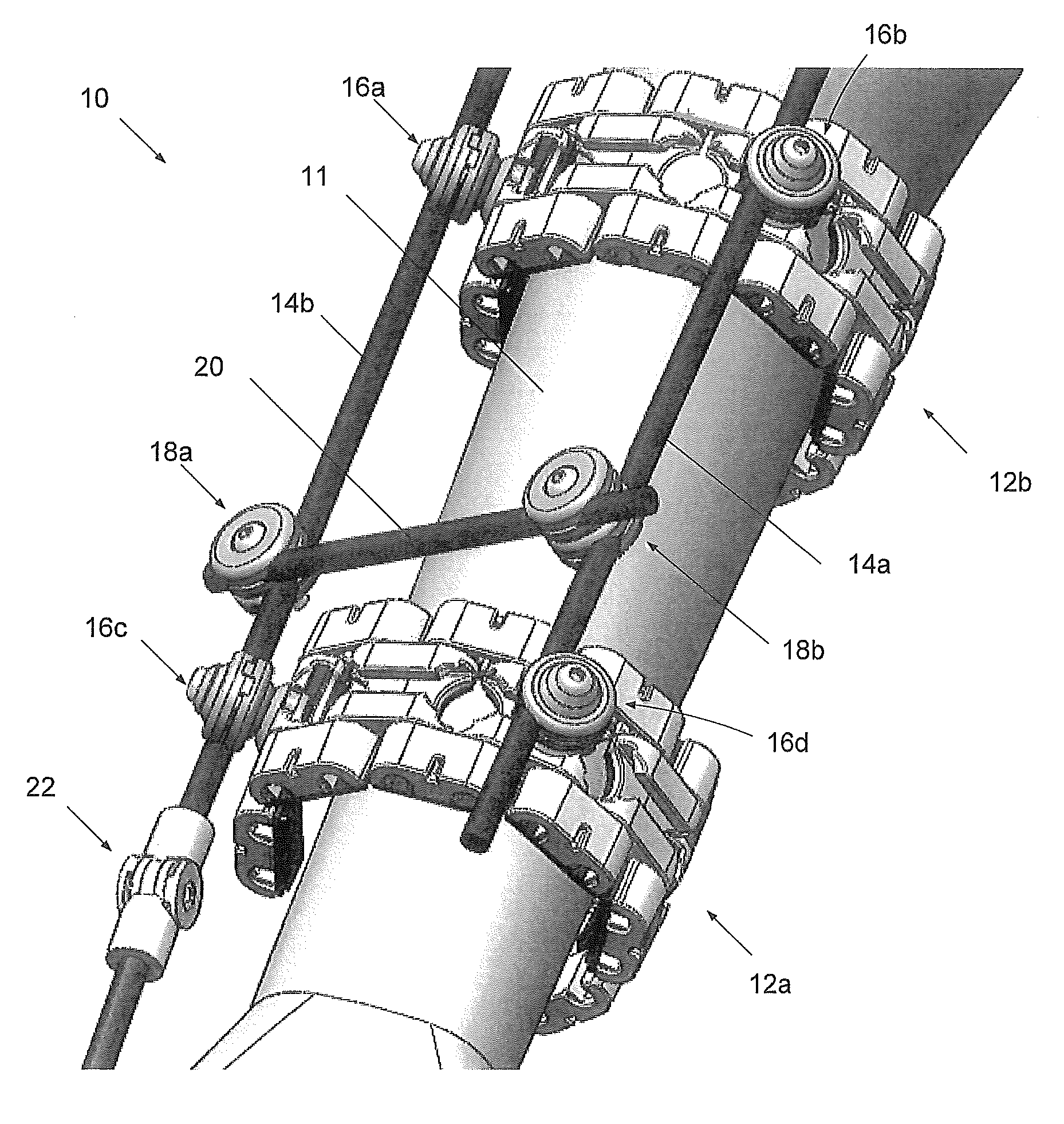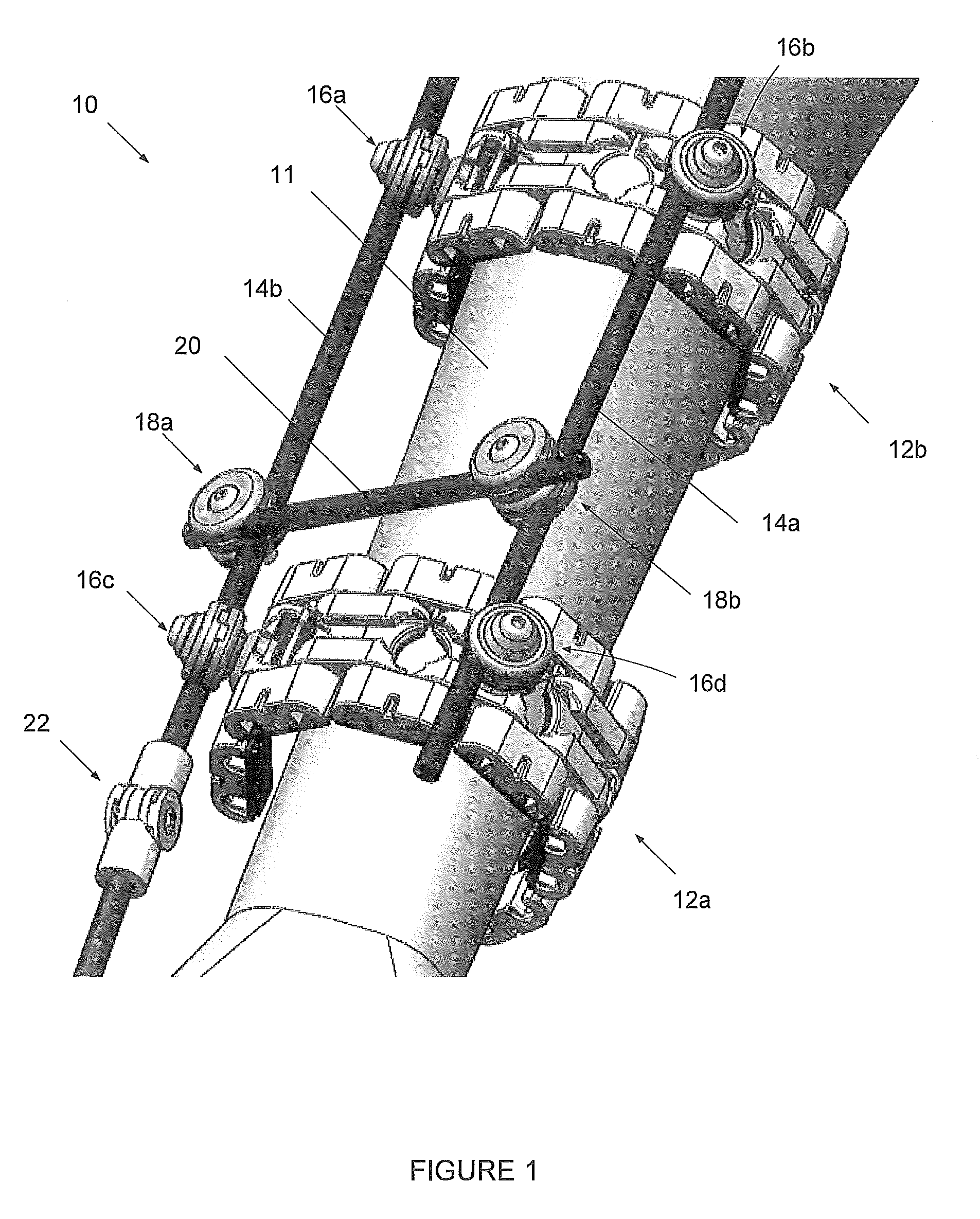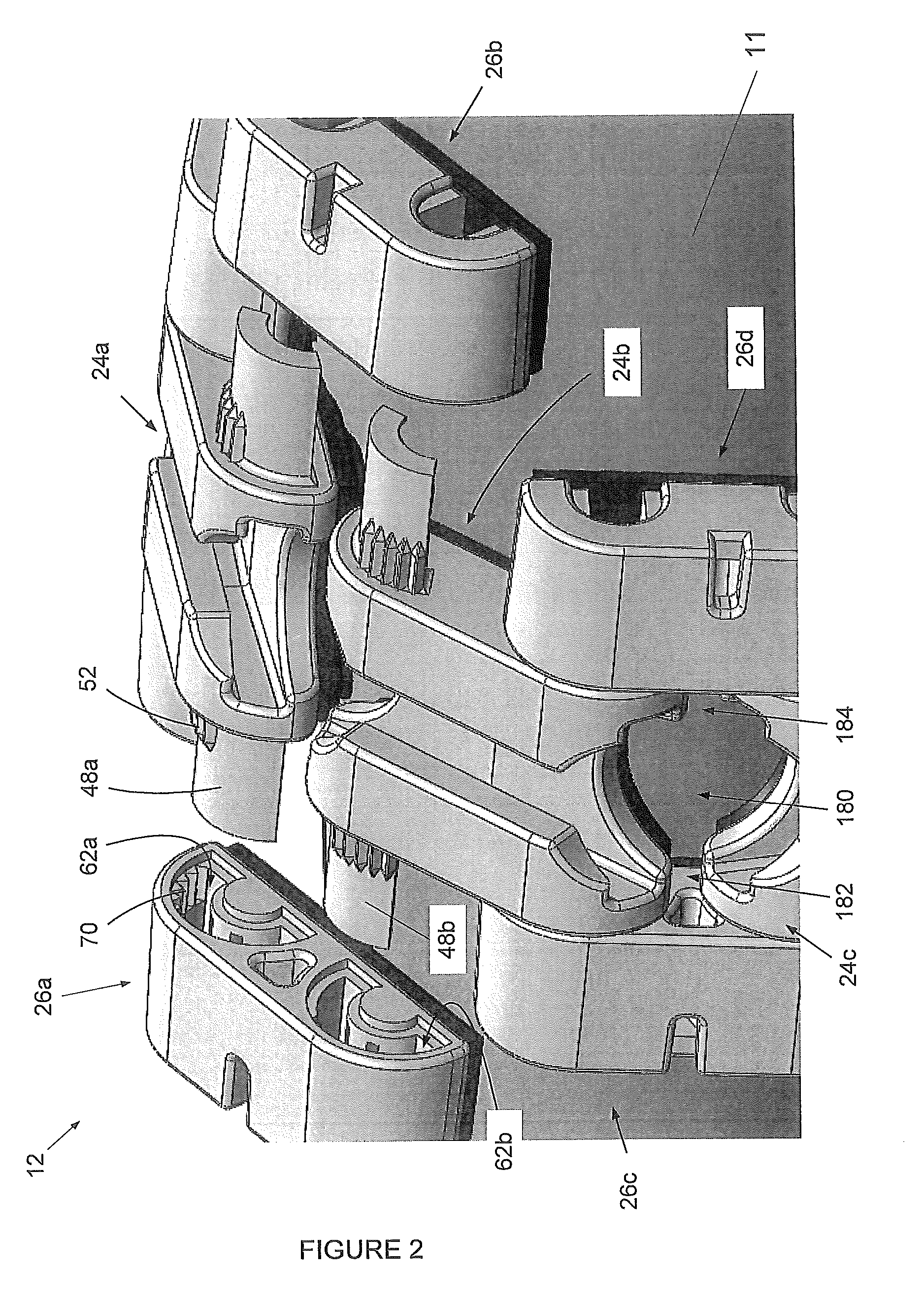Fixator
a fixator and non-invasive technology, applied in the field of non-invasive external fixators, can solve the problems of poor healing, soft tissue or bone, and increased risk of complications, and achieve the effects of time-consuming, uncomfortable, and convenient application for patients
- Summary
- Abstract
- Description
- Claims
- Application Information
AI Technical Summary
Benefits of technology
Problems solved by technology
Method used
Image
Examples
Embodiment Construction
[0080]FIG. 1 shows a non-invasive fixator 10 according to the present invention, mounted on an arm 11 of a patient. The fixator 10 comprises two bracelets 12a, 12b that are maintained in relative positions on the arm by two approximately parallel running rods 14a, 14b, which are secured to the bracelets by means of four connecting devices 16a, 16b, 16c, 16d (two at each bracelet). A third rod 20 is secured crosswise by two cross-linking devices 18a, 18b. A hinging device 22 is connected at one end of rod 14b. The hinge device is connected by means of a rod to another bracelet or a cuff (not shown). Thus, in a preferred embodiment, the fixator comprises three bracelets. The hinge device is aligned with the plane of the joint, adjacent to fracture zone, movement.
[0081]The bracelets 12 are comprised of a plurality of elements arranged in rows. In the exemplary configuration shown in FIG. 1, the elements are arranged in three rows: a central row and two outer rows. This is illustrated i...
PUM
 Login to View More
Login to View More Abstract
Description
Claims
Application Information
 Login to View More
Login to View More - R&D
- Intellectual Property
- Life Sciences
- Materials
- Tech Scout
- Unparalleled Data Quality
- Higher Quality Content
- 60% Fewer Hallucinations
Browse by: Latest US Patents, China's latest patents, Technical Efficacy Thesaurus, Application Domain, Technology Topic, Popular Technical Reports.
© 2025 PatSnap. All rights reserved.Legal|Privacy policy|Modern Slavery Act Transparency Statement|Sitemap|About US| Contact US: help@patsnap.com



